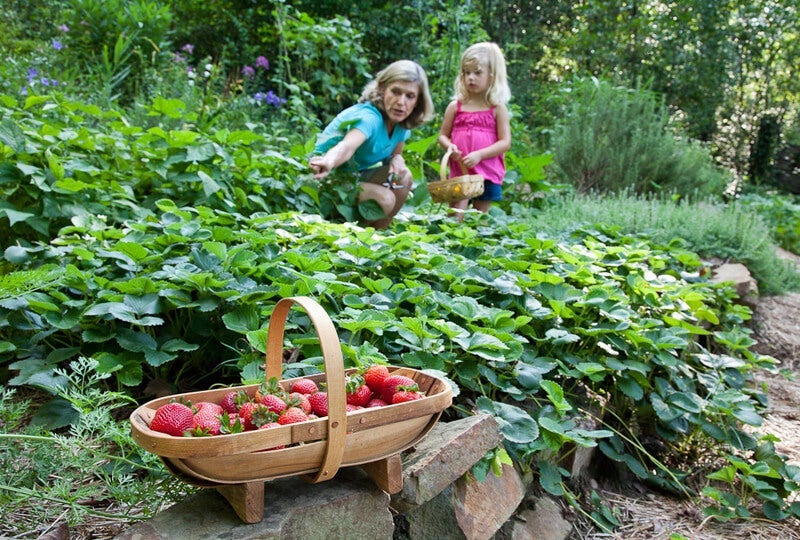Would your child rather have a cookie or a strawberry? Unfortunately, most children will choose the cookie, perhaps a more familiar, year-round treat. We know the strawberry is the healthier choice, but how do we cultivate their taste for the sweet delights of fruit, as well as vegetables?
Naturally Sweet, Undeniably Good
First, we need to show them that the natural sources of sweetness are as good or even better as processed sweets. Amanda Storey, former Assistant VP of Community Health & Wellness at the United Way of Central Alabama, recalls one visit to Jones Valley Urban Farm in downtown Birmingham. "A kid walked up to me and said, ‘This carrot tastes like candy!' He had never had a carrot from the ground—only from the grocery store," she says. "He loved the carrot, and he went on and on. When you can eat a fruit or veggie that is ripe and fresh, the natural sugars stand out, and it just tastes better!"
The child who pulled a carrot from the soil, washed it, and bit off a mouthful enjoyed the freshest, sweetest carrot available. The same goes for strawberries, tomatoes, and other fruits and vegetables—the fresher, the sweeter. Generally, fruits and vegetables that are transported or stored are not as sweet as those picked in their prime and eaten immediately. Either they were picked prior to ripening so they never acquired the sugars from their mother plant, or they were shipped, stored, or both, declining in sweetness and nutrients over time. That's why "garden fresh" is not just a marketing phrase. It is the key to great taste.
Registered dietician Sonthe Burge agrees. She explains that the sugar in fruit (fructose) is nearly twice as sweet as table sugar (sucrose). "Yes, fructose is a sugar, but there is also vitamin C and fiber that you don't get in a cookie," she explains. "You just can't compare the sugar in fruit to the sugar in a processed food item."

The Sweet Rewards of Gardening
Gardening offers a healthy way for children to learn about natural sweetness. Choose a sweet cherry tomato such as Sun Sugar or Super Sweet 100, and help a child plant it. Everyone loves snacking on those delightfully sweet little orange tomatoes. If all the gardening space you and your child have is a sunny balcony, a Sweet ‘n' Neat or Husky Cherry Red tomato plant is the perfect choice. Whether tomatoes or strawberries or melons, children love watching them grow, seeing the flowers and bees, and then seeing the fruit develop and turn color. After developing a sense of ownership of their plants, they will love eating the fruits of their labor.
Kids also enjoy helping, which gives them the opportunity to explore the touch and the smell of their food (as well as giving them some outdoor exercise). Picking strawberries and cherry tomatoes is like a treasure hunt. Let them help you in the kitchen, too, washing the produce so it is available and ready for a snack.
The real test, though, happens at the dinner table. Burge recommends keeping it positive. "Kids will eat around what they don't want. Just put it there and they will eventually get to it, especially if they see others eating it. When we push them to eat, they will resist. Just be as positive as you can be."
As usual, setting a good example is key to getting kids excited about natural sweets like strawberries. "Watching mom and dad eat fruit and vegetables as snacks, as well as for meals, really helps," Burge continues. "Even if they don't eat a carrot the first time, serve it cooked, raw, or grated in a salad the next time. Don't make a big deal of it. Just have it there. Let them eat what they like and don't worry. We say to eat a variety of foods, but their nutrition is a reflection of several days, or a week, not a single meal."
Want more help teaching kids about gardening?
Learn about the Bonnie Plants 3rd Grade Cabbage Program, which introduces several hundred thousand kids to the joys of gardening every year.





 Herbs
Herbs
 Vegetables
Vegetables
 Fruit
Fruit
 Flowers
Flowers
 Succulents
Succulents


